With the omnibus out this week, Robert Greenberger, who worked as an editor on the seminal series, picks 13 favorites…
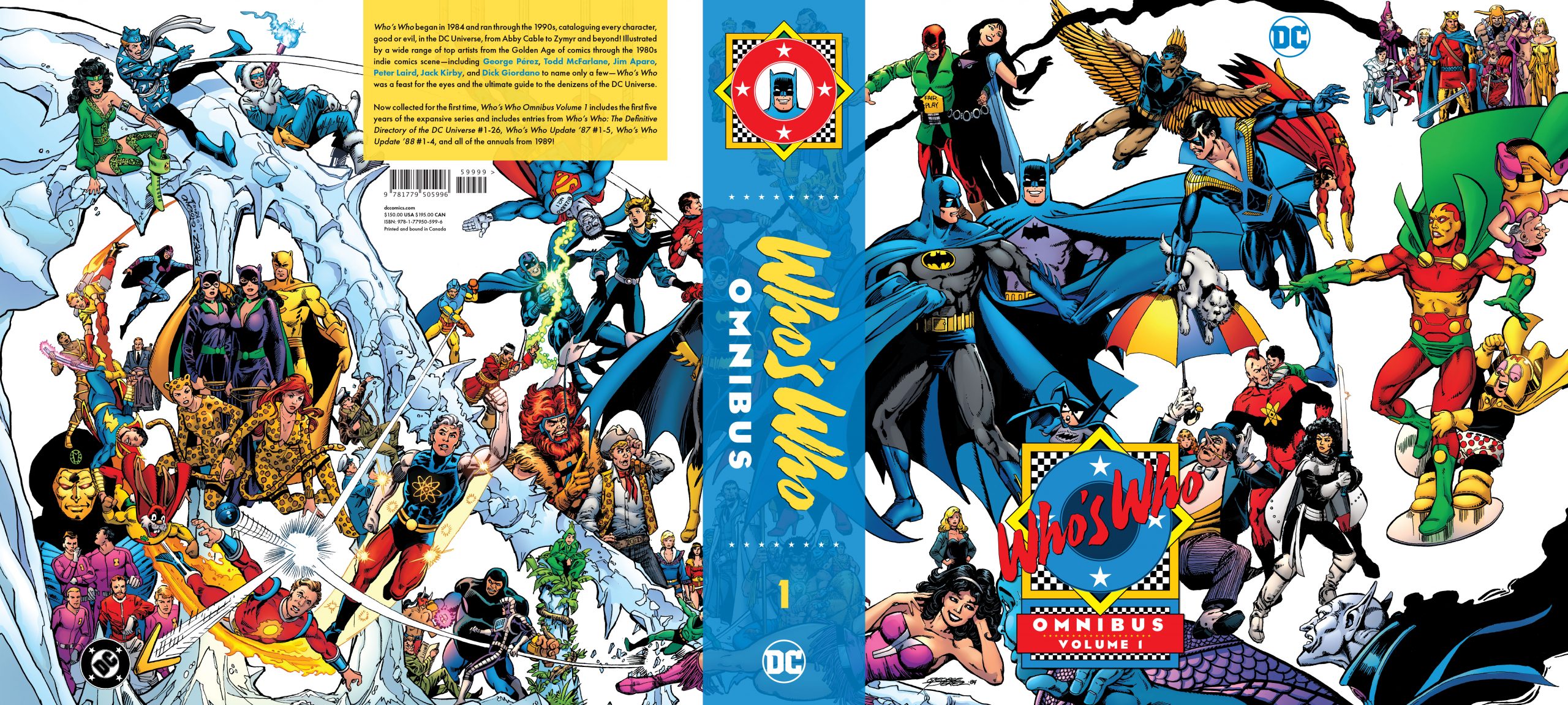
The long-awaited DC Who’s Who Omnibus Vol. 1 is out April 13 and we couldn’t ask for a better authority to pick 13 GORGEOUS PAGES than Bob Greenberger, an historian and former DC editor who was deeply involved in the original, seminal 1980s series.
Bob’s got some fantastic pages to show off for you — along with their behind-the-scenes stories. Not only that, he’s even put together a list of 13 runners up. (Click here.)
So, dig Bob’s faves. And don’t forget his latest project: Thrilling Adventure Yarns 2021, the latest such anthology from Crazy 8 Press. (Click here for info, including how to order.)
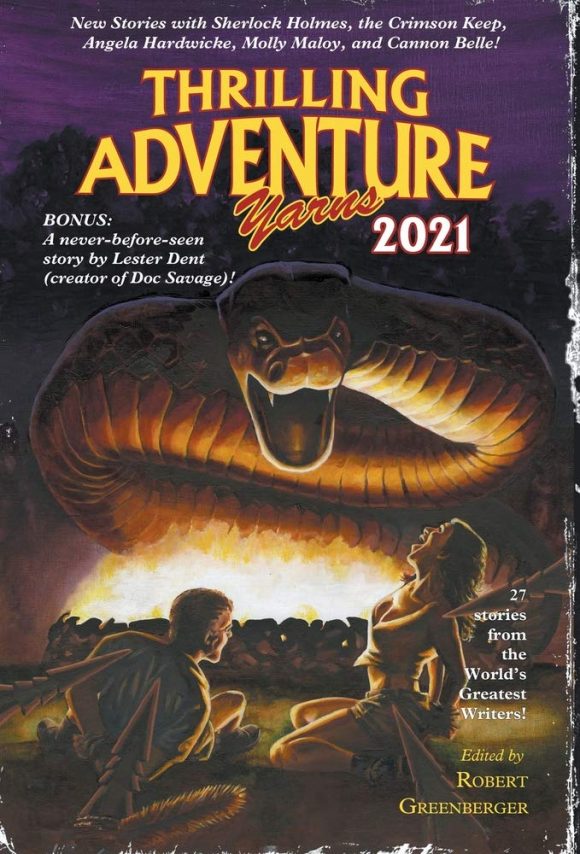
Oh, and make sure you visit us again later this week because Bob’s got even more goodies coming about the classic Who’s Who: The Definitive Directory of the DC Universe.
Right on.
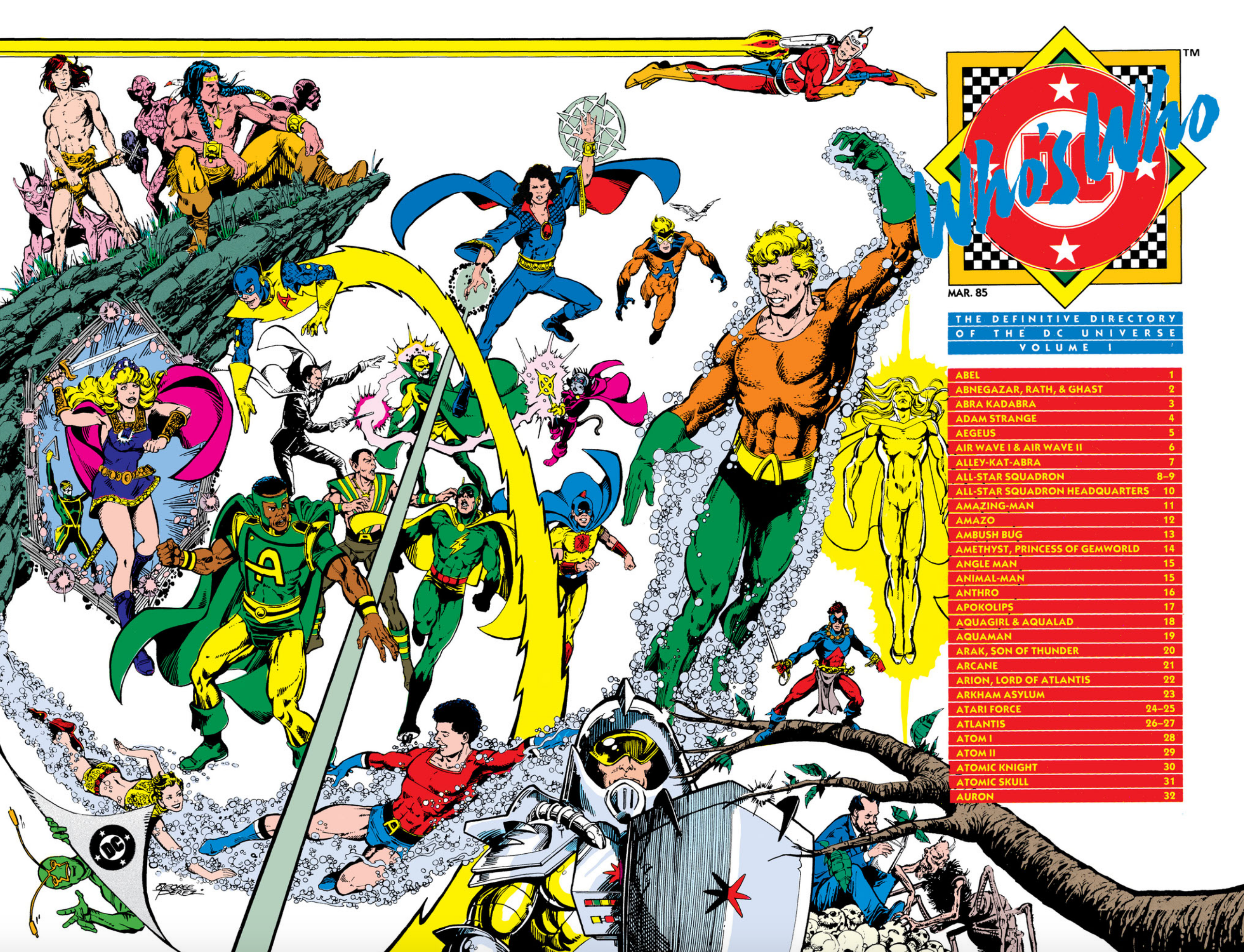
By ROBERT GREENBERGER
I couldn’t have asked for a better first comics assignment than being asked to work on Who’s Who: The Definitive Directory of the DC Universe. Well, maybe being asked to work on destroying that universe in Crisis on Infinite Earths. I was hired by DC Comics in 1984 to assist Len Wein and Marv Wolfman on both projects and I was in heaven.
The 24-issue directory was slowly moving from dream to reality when I arrived and we needed to pick up speed. Working from Peter Sanderson’s notes, based on his reading every published comic in the company’s print library, we drafted a master list of characters broken into half, full and two-page assignments.
The fun really began when we began assigning artwork. The rules Len, who eventually was its sole editor for the first 12 issues, established:
- If the character’s originating artist was still alive and willing, that artist got the first refusal.
- All artists could submit wish lists that would be consulted if the invited artist said no.
- Every issue would feature at least one new artist.
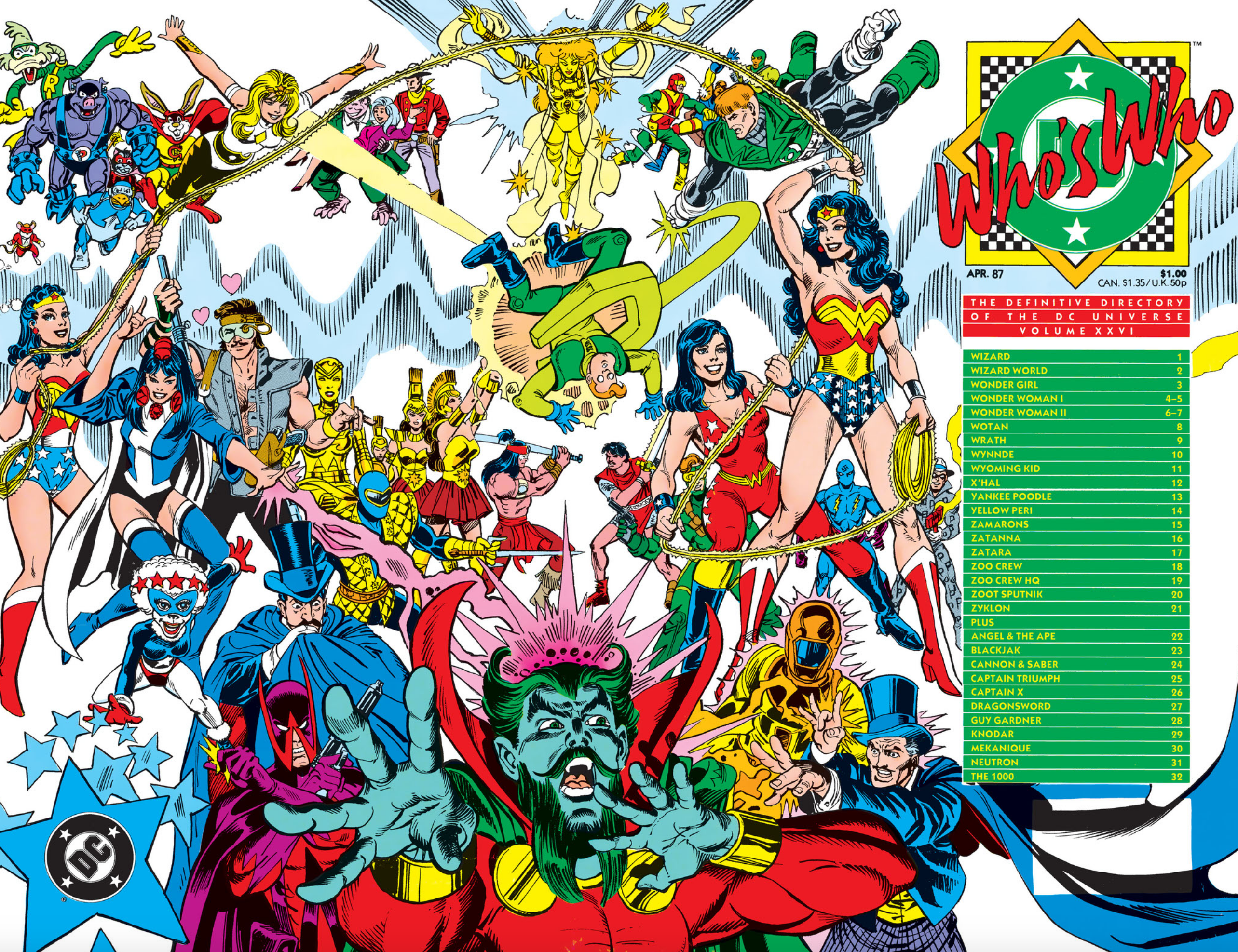
Armed with that, we got to work and after Len left staff, I inherited the book and kept those rules. Throughout the run, I made it my mission to bring in artists from the independent field or international field, whose work I enjoyed as a reader, and look back with great pride at how many made their DC debut in those pages.
The first issue was filled with people feeling their way through the process, with us using their work to show subsequent contributors how it is was done. Each received a grid with a giant X marking where the text went and a sheet with instructions for the main figure and background figures, explaining the visual information had to be as vital to understanding the character as the text. Thankfully, we had a set of true professionals to help get the ball rolling.
So, being asked to pick your 13 favorites is no easy task. But, with the omnibus coming out this week, I was not one to shy away from a challenge. In reviewing the pages, I list the ones below whose work tugged at memories or emotions:
—
Bat Lash, by Dave Gibbons, Vol. II. I have no recollection why we couldn’t get Nick Cardy at all for the series, so finding someone to capture the unique quality of the Western hero was not an easy one. I believe it was Len who thought of his Green Lantern partner for the gig. I couldn’t have been happier as Dave adjusted his style just slightly and perfectly captured the soft roundness of Cardy’s most dashing gunslinger.

—
Camelot 3000, by Brian Bolland, Vol. IV. One of the guidelines for the series was that it was celebrating the company’s 50th anniversary so series set outside the core continuity would be included. That delighted me as it meant we could include Camelot 3000 and get more exquisite Brian Bolland art. What makes this special for me is that it has the entire cast in one place in all their heroic glory.
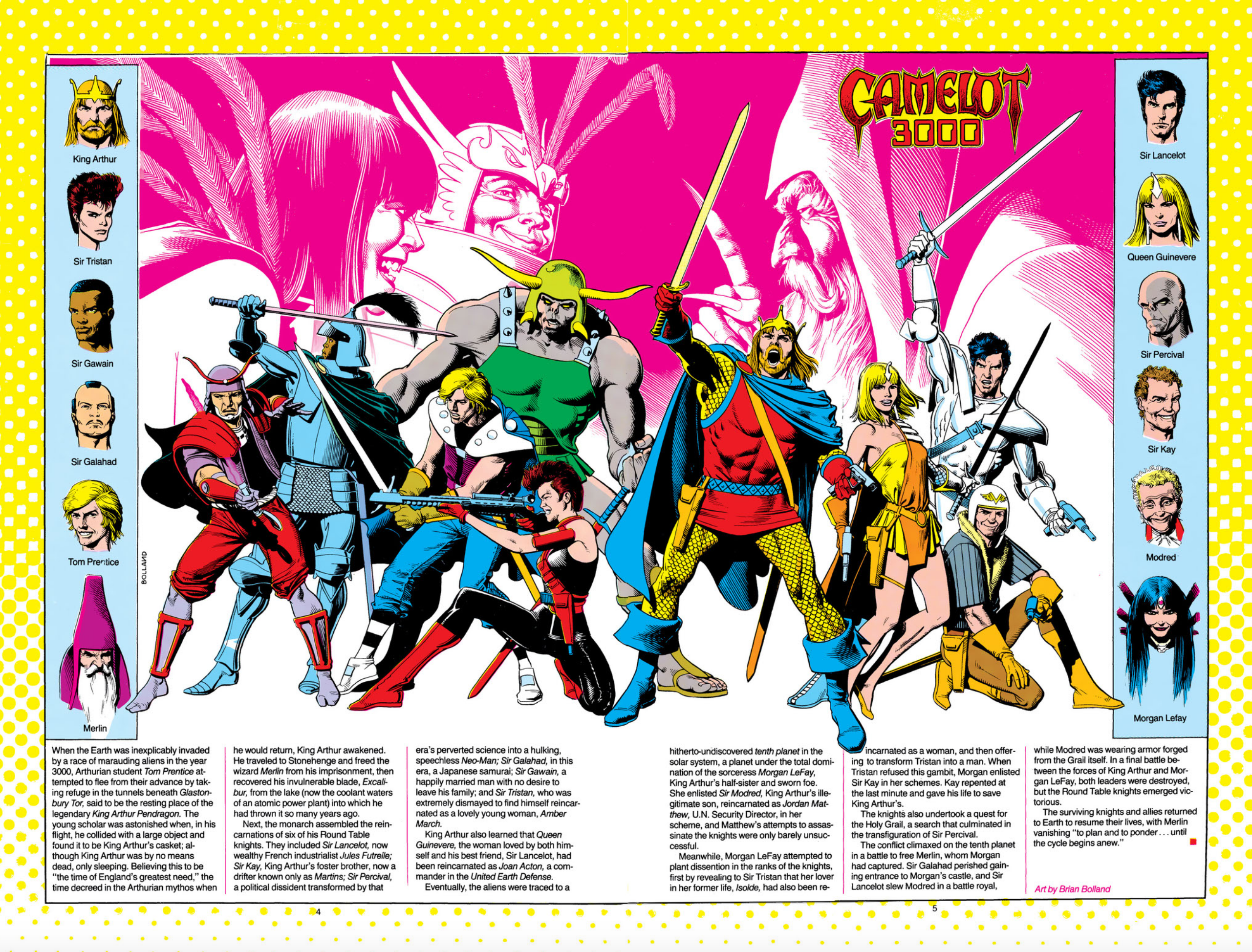
—
Catwoman, by Dave Stevens, Vol. IV. I had befriended Dave Stevens some years earlier at the San Diego Comic-Con, just as we were all discovering his beautiful work on The Rocketeer for Pacific Comics. So, at the 1984 SDCC, I spent some time talking up Who’s Who in the secret hope he would like working with us enough to eventually do more than pinups. While that was not to be, I did get three lovely pieces from him, starting with this one featuring the Earth-Two (Golden Age) version of Catwoman, neatly capturing the era. Dave refused to send us the artwork, working with our production department on the technical specs, and sent in negatives.
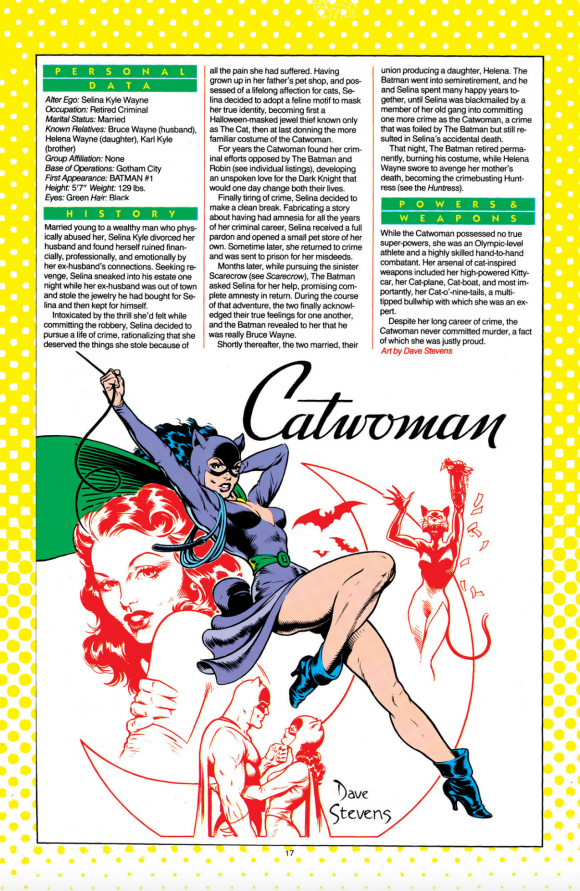
—
Dart, by Jose Luis Garcia-Lopez, Vol. V. Another out-of-continuity series, current at the time, was Atari Force and the core cast plus team all received pages. Alas, contractual issues apparently meant they were not to be included in the omnibus but I can gush about Jose Luis Garcia-Lopez’s gorgeous work here. Jose’s work is lush but also powerful, imbuing every character he illustrated for Who’s Who with dynamism beyond your expectations. To me, Dart started that and brims with her youth and enthusiasm along with why she’s a hero. (Ernie Colon’s Amethyst in Vol. I does the same thing.)
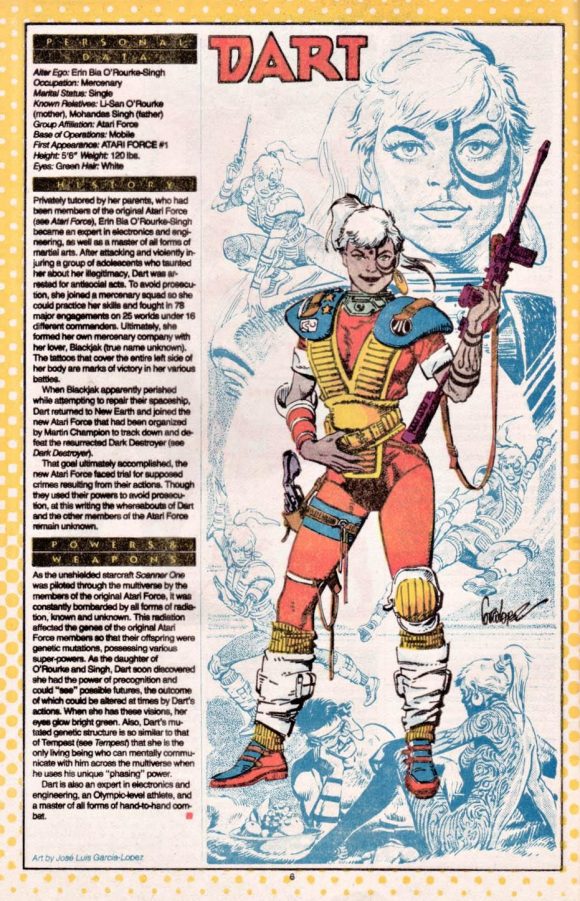
—
Dr. Tzin-Tzin, by Bill Sienkiewicz, Vol. VII. This minor Batman villain is suddenly seen as a viable, deadly opponent thanks to the design talent of Bill Sienkiewicz. He was able to make the mundane character suddenly vibrant and this one wowed me when it arrived, but just about any entry he drew for us could be considered for this list.
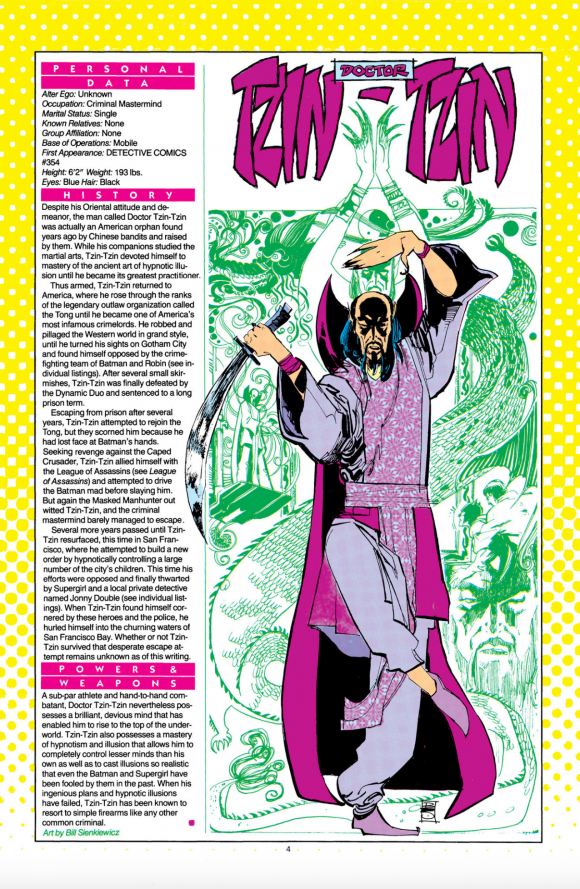
—
Hawkwoman, by Paul Smith, Vol. X. It took more than 15 years for Shayera Thal to stop being called Hawkgirl instead of the more appropriate Hawkwoman. She was her own hero, something Tony Isabella reminded us of during the concurrent Shadow War of Hawkman series. Paul Smith put a weapon in her hand and made her more than just Hawkman’s partner, but a force to be reckoned with.
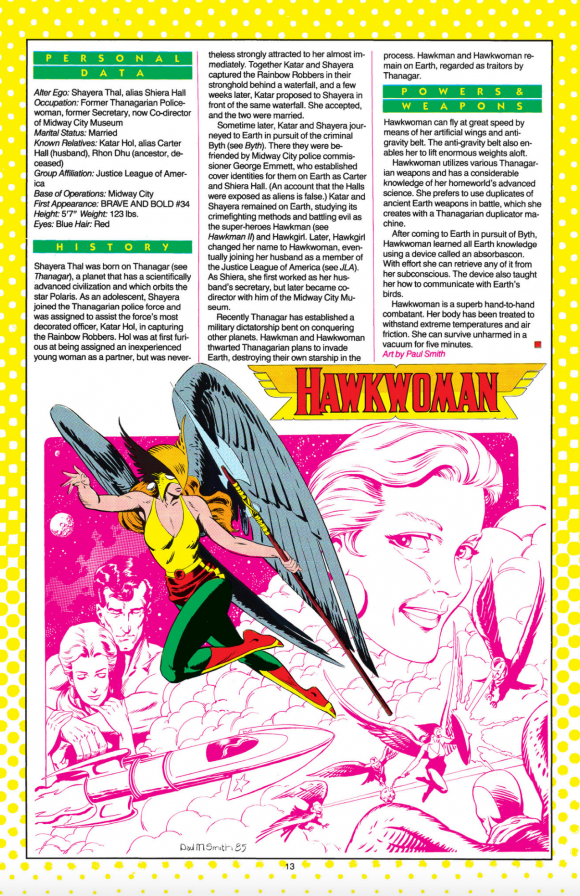
—
Johnny Thunder, by Gil Kane, Vol. XI. Gil Kane got our premise from the beginning and grew to like these assignments. Partly because they were quick for him and he was always looking for fast paychecks back then. But, it stretched his design talent in ways beyond the inventory covers we were buying from him at the time. Here, he was storytelling with design, and this page perhaps best exemplifies that, covering the Western crimefighter’s career.
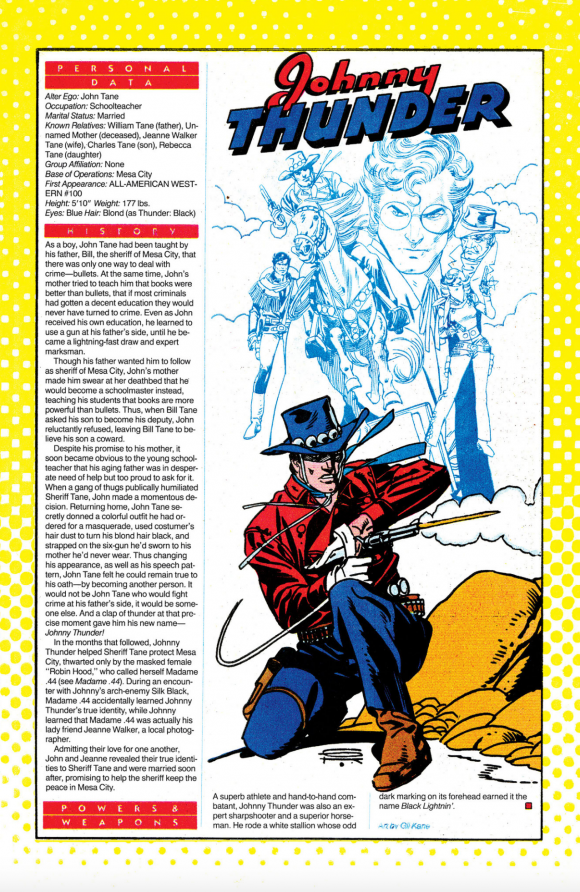
—
Justice Society of America, by Jerry Ordway, Vol. XI. Like Gil, Jerry Ordway had a wonderful sense of conveying information through imagery and he still managed pages for us even after he took over inking Crisis. I chose the JSA spread because he took these venerable original heroes of the DC Universe and paid homage. He made certain their physiques and body language were individually tailored for each character, making his contributions stand out.
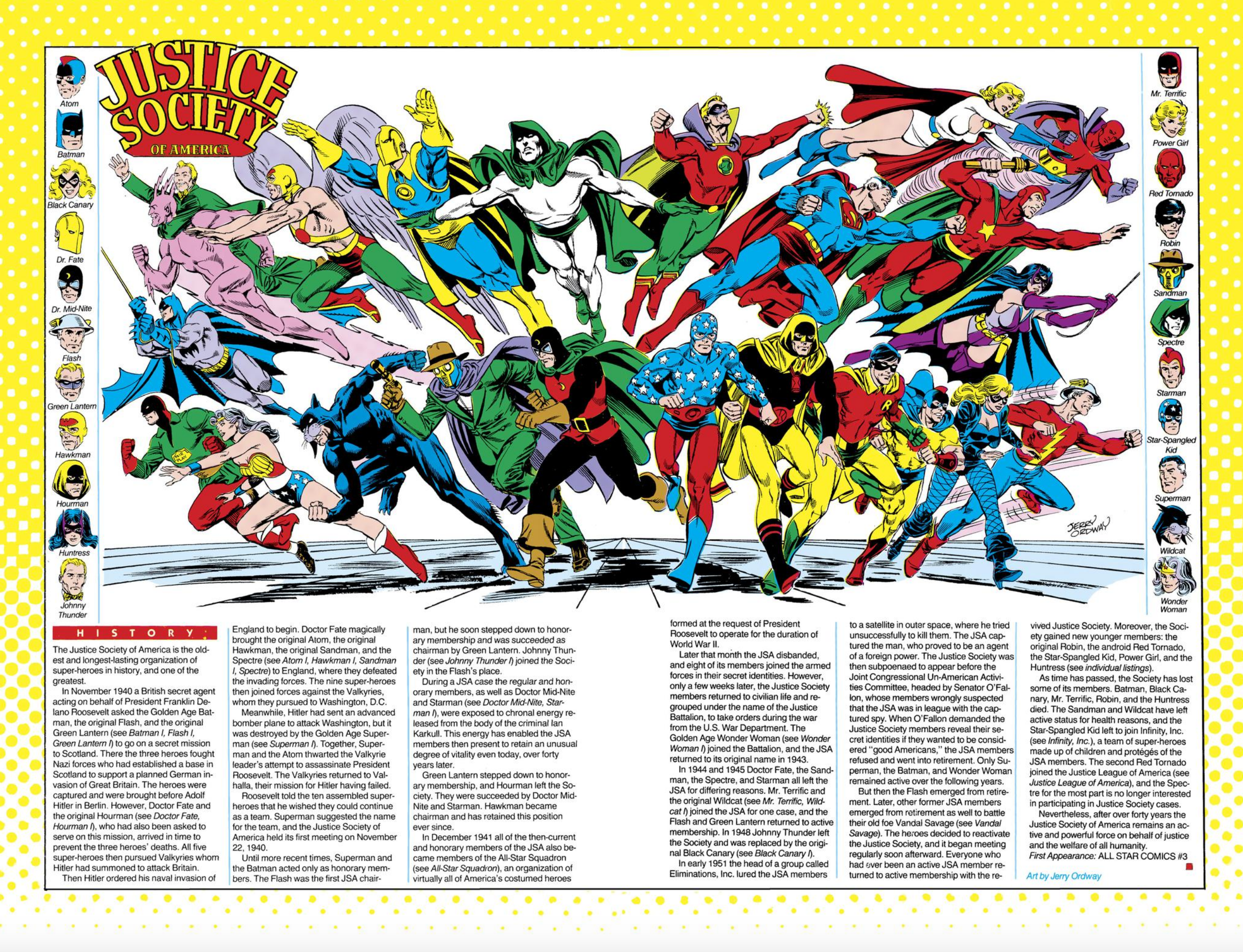
—
Phantom Lady, by Jaime Hernandez, Vol. XVIII. I was in love with Jaime Hernandez’s art from the first issue of Love and Rockets. I believe I didn’t get to pitch Who’s Who to him until the summer of 1985, after the series launched. He admitted to being a Legion of Super-Heroes fan and of course, he wanted several of the ladies, starting with Phantom Girl. When the page arrived in the mail, I’m pretty certain I was giddy for the rest of the day, bringing this independent talent to our audience.
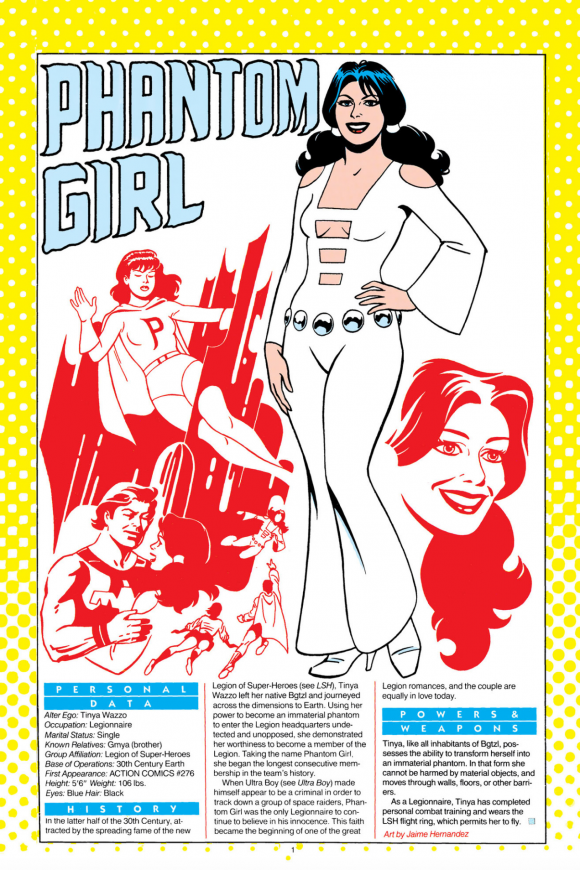
—
The Question, by Steve Ditko, Vol. XIX. On the other hand, there was a different delight to be had in actually calling Steve Ditko and getting him to agree to contribute to the series. Sturdy Steve was famous for refusing to revisit his old DC and Marvel characters but I wanted to try him with his old Charlton creation. I was stunned he agreed and even more thrilled when he arrived to deliver the work. He intended to drop the page and leave but he lingered for a brief chat, seeming somewhat uncomfortable loitering by the elevator. Getting this, which looked as wonderful as his series did in the 1960s, was a coup for me.
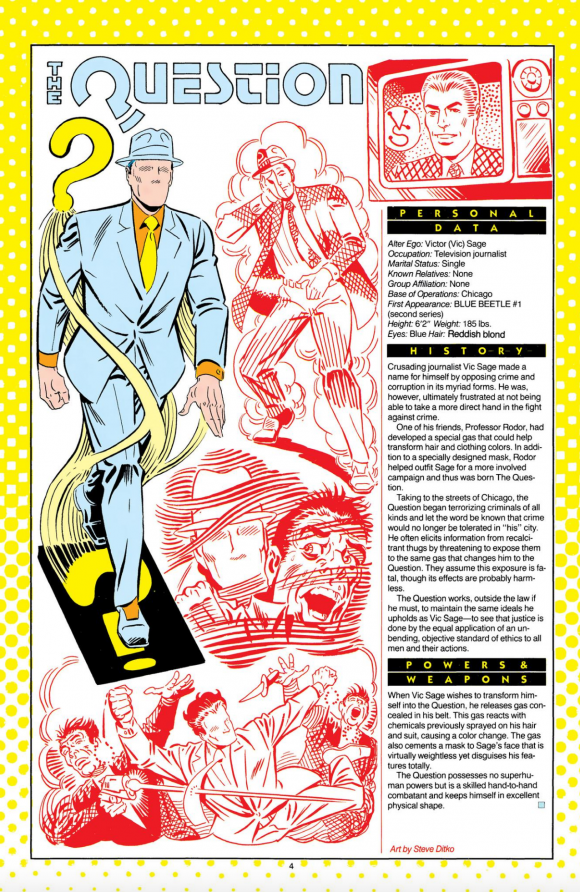
—
The Red Tornado, by Shelly Mayer, Vol. XIX. As most know, DC Comics was originally National Comics and All-American Comics, not really merging for real until 1946. All-American, home to the Flash, Hawkman, and JSA, was overseen in its first decade by wunderkind writer/artist/editor Sheldon Mayer. He was not in good health by this time and couldn’t come to New York, but was happy to chat with DC staff when we called, so I was encouraged to invite him to do this page. We struck up a cordial relationship resulting in this page and, shortly thereafter, his faithful recreation of a story to be used in The Greatest Golden Age Stories Ever Told. Having someone whose career was synonymous with DC and who was there at the beginning was a special treasure.
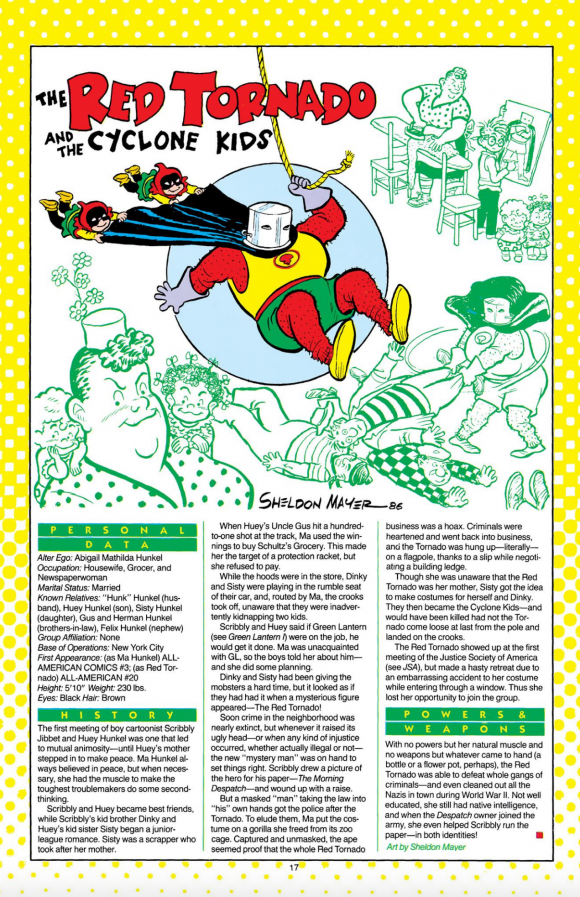
—
Superman, by Wayne Boring and Jerry Ordway/Curt Swan and John Byrne, Vol. XXII. I’m cheating here but these pages work together and need to be considered as one entry. We were closing the door on not only the Silver Age Superman but the Golden Age Superman as well. Here, I was able to get Wayne Boring—he of the Joe Shuster Studio, whose indelible style spanned the Golden and early Silver Age and fixed the image of the Man of Steel for comic strip readers—to draw the hero one final time. Ordway, I believe, asked to ink this one and who could refuse? The results speak for themselves.
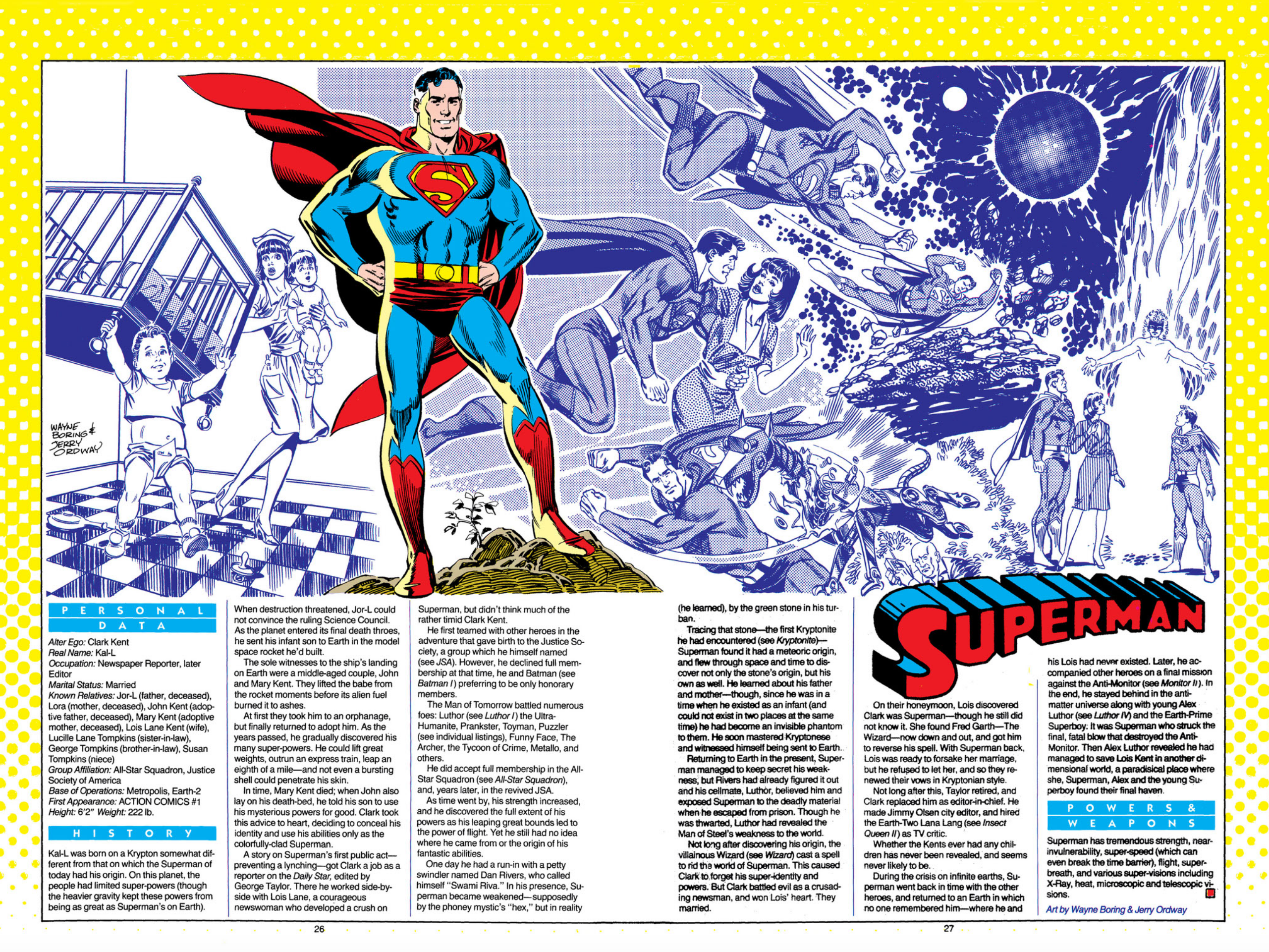
The next entry was a literal handing of the baton as Curt Swan is inked for the first (only?) time by his successor, John Byrne. Initially, Curt misread my directions and took everything you see here, and neatly crammed it onto a single page. When I called to correct him, he grumbled good-naturedly and redid the assignment. The error proved providential for me as Curt gifted me with the single page we could not use and it sits framed above my desk at home.
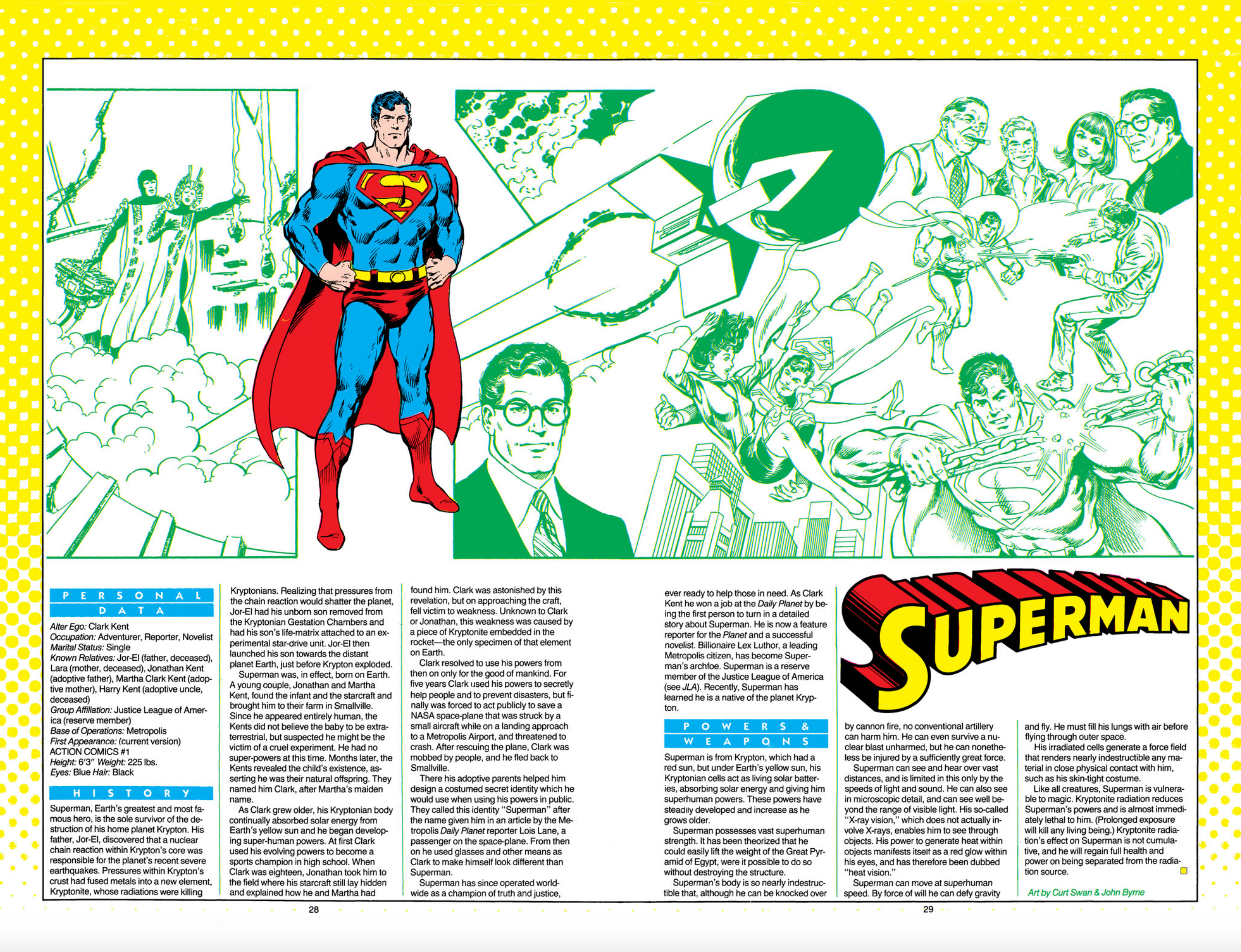
—
Wonder Woman by Trina Robbins/George Pérez, Vol. XXVI. In much the same way, Trina Robbins, one of the underground comix pioneers, showed her love for the comics of her youth with this tribute to the Golden Age Amazon Princess, evoking co-creator Harry G. Peters’ unique style.
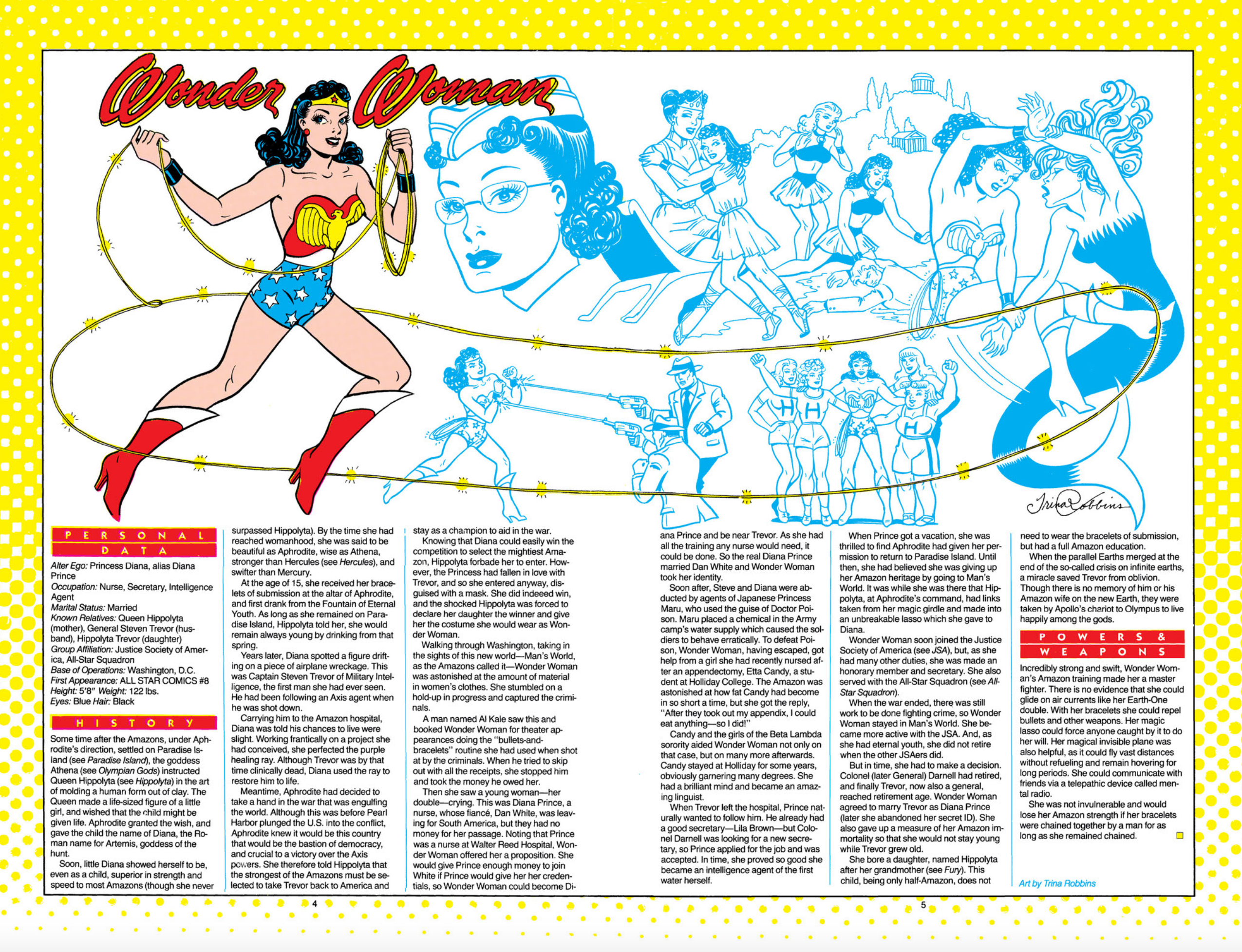
And we get a glimpse of the DCU’s future with George Pérez’s take on the hero as he was settling in to guide and illustrate her exploits going into the post-Crisis future. While his covers were incredible, and his other pages for the series just wonderful, this one speaks of power and promise.
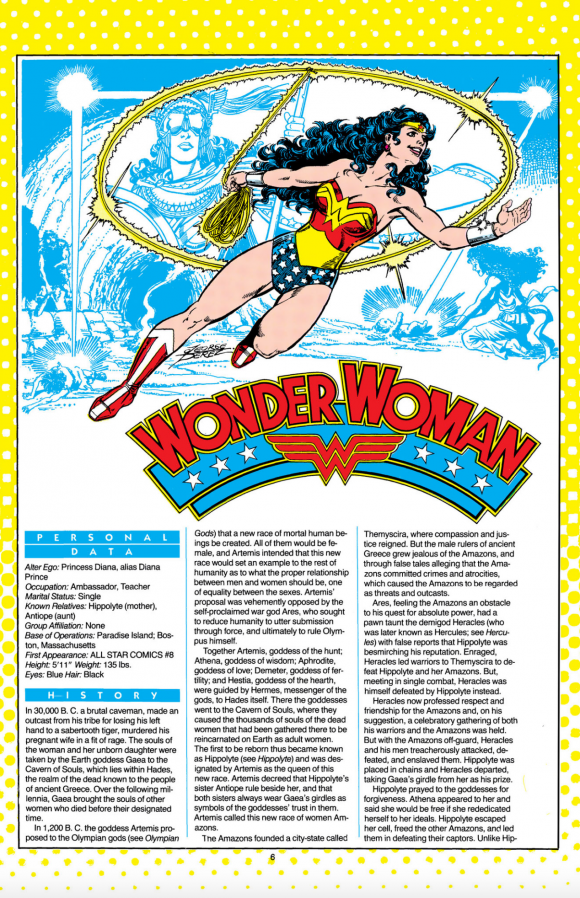
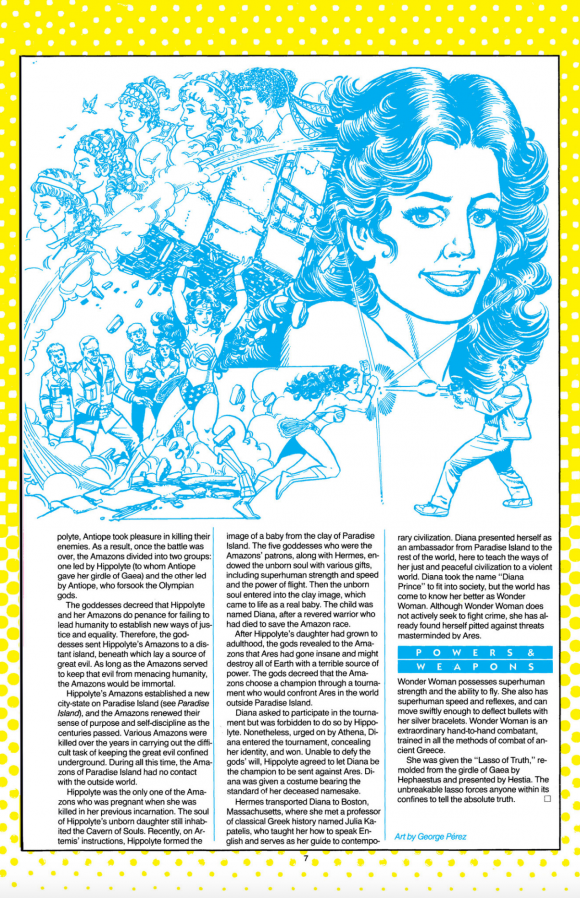
—
Over 800 pages, some 1000+ characters were covered by a few hundred artists. Winnowing that down is nearly impossible and having the majority of it represented for all to see again reminds us of the company’s rich artistic heritage.
—
NEXT: 13 MORE Gorgeous WHO’S WHO Pages, Picked by BOB GREENBERGER. Click here.
—
MORE
— Dig the Magnificent Cover for DC’s WHO’s WHO OMNIBUS Vol. 1. Click here.
— THE GEORGE PEREZ INTERVIEWS: Here’s What Made the WHO’S WHO Covers So Special. Click here.

April 11, 2021
Can’t wait for this book! It really stinks the Atari Force entries will not be included. One of my favorite series’ ever!
April 11, 2021
Seconded, Tonebone. I loved those Atari Force entries.
April 11, 2021
This is truly a wealth of creative talents at its finest. Thanks for this article, Mr. Greenberger. 🙂
April 12, 2021
The thing about DC’s Who’s Who that was great compared the Marvel Universe Handbook is that they were all full-blown illustrations, not the simple figural poses you got in OHotMU.
DC’s were more like if you could go to all the conventions in the world to meet your favorite artists or creators of favorite characters, and had an unlimited budget to get a private commission piece from any artist. A full-blown illustration piece, not just a sketch, not just a single figure, nothing more.
April 13, 2021
I’m definitely more of a Who’s Who guy than OHOTMU, for the art alone. The Dave Stevens piece may be the best of the entire run, from the original to the loose leaf, but there are many great ones in between, and many of them are here!
April 14, 2021
Indeed gorgeous artwork and reproduction.
I am amuse that Dr. Tzin-Tzin and Dr. Double X got a full page while Deadshot only got a 1/2 a page.
Today Deadshot would probably get a 2 page spread.
April 15, 2021
Sergio Aragones for Bat Lash, since he was a co-creator, would have been GREAT, but I understand the stylistic difference would be pretty big.